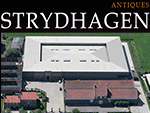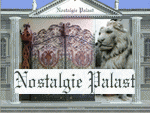|
Clodion was a sculptor of groups, figures, busts, low reliefs, statues, public monuments and decorating objects. He also was a very fine drawer known for his remarkable sketches expressing a very delicate sense of elegant and harmonious lines. A highly skilful modeller of clay, Clodion was intensely affected by the new interest in collecting terracottas. While terracotta had been traditionally designed for larger works in more permanent and expensive materials, terracotta sculptures could now be seen as independent works of art revealing the artist's inspiration and touch. Clodion's quickly executed yet detailed terracottas were, as his earliest biographer records “bought by amateurs even before they were finished". He also worked with his brothers in other media, like decorating objects such as candelabra, vases and clocks. They used the immense quantity of drawings Clodion had made during the circa ten years he lived, studied and worked in Italy: representations of antique vases, bacchanals, nymphs, fauns, satyrs, putti, low-reliefs. Drawing primarily from Pagan Antiquity, Clodion created light-hearted terracotta sculptures that epitomized the Rococo style. He created elegant and desirable female figures in coquettish or mannered poses, not seldom rather seductive He ran his successful business during about fifty years, until it was ruined by the French Revolution. This Clodion style wasn’t appreciated anymore and he didn’t have clients anymore in Paris. In 1795 he therefore moved to Nancy where he was involved in the interior decoration of private mansions and the creation of models for the porcelain factory Niderviller until he returned to Paris in 1771. Late in his life, when Neoclassial works were more popular, Clodion adjusted his style and worked on major public monuments in Paris. Fact is that he turned out to be less successful in this kind of large work than in his oeuvre of small dimensions.
Clodion was related to a family of sculptors in Lorraine, the Adam family. He was the son of Thomas Michel and Anna Adam, a daughter of sculptor Jacob-Sigisbert Adam and was one of the most important representatives of 18th century German sculpture. In 1781 he became by his marriage the son-in-law of sculptor Augustin Pajou (1730-1809). Clodion trained in Paris in the studios of his uncle Lambert-Sigisbert Adam (1700-1759) and after he died of Jean-Baptiste Pigalle (1717-1784), the most successful sculptor of the time. Upon winning the Prix de Rome in 1759, he entered the École des élèves protégées and moved in December 1762 to Rome, sharing a studio with Jean-Antoine Houdon (1741-1828) and studying Antique, Renaissance, and Baroque sculpture. Among his clients were for example Catherine II of Russia (1729-1796) unsuccessfully attempted to bring him to her court and the duke de La Rochefocauld. He created high quality terracottas which were very successful. In 1771 Clodion returned to Paris, where he continued to produce mostly in terracotta. He rarely exhibited at the Salon de Paris and he didn’t apply for orders. In 1773 he became Agrée de l’Académie. In 1774 he divorced and he had a natural daughter who left her father following her lover, the sculptor Marin.
End of the 19th century
Bronze on the authentic wooden base
H. asymmetrical base and sculpture 41 cm; Base: W. 15,50 cm, D. 12 cm
Museums: Aux, Châlons-sur-Marne, Cherbourg, Dieppe, Montpellier, Nantes, Orléans, Paris, La Rochelle, Rodez, Semur-en-Auxois, Sèvres, Versailles, Berlin, Londres, Moscou.
Sources: Bénézit, E. (vol. 3) (1999), Dictionnaire critique et documentaire des peintres, sculpteurs, dessinateurs et graveurs de tous les temps et de tous les pays par un groupe d’écrivains spécialistes français et étrangers, Paris: Éditions Gründ, p. 719; Thieme, U., & Becker, F. (vol. 7) (1999), Allgemeines Lexikon der bildenden Künstler von der Antike bis zur Gegenwart, Leipzig: E. A. Seemann, p. 110-111; Thirion, H. (1885), Les Adam et Clodion, Paris.
|




















